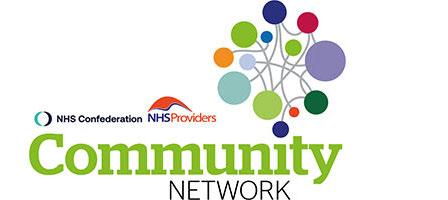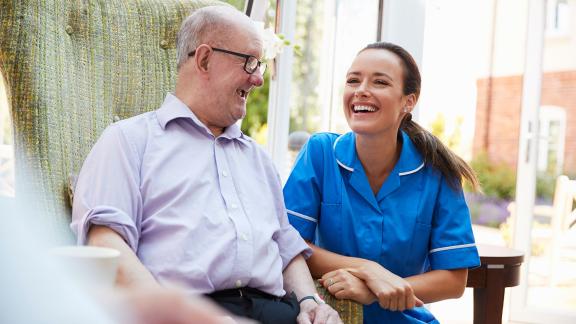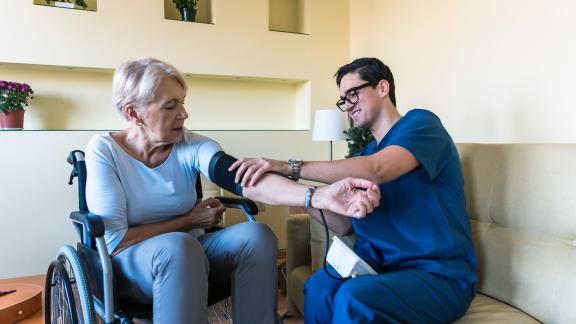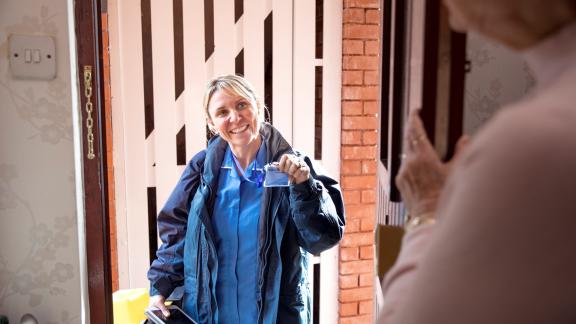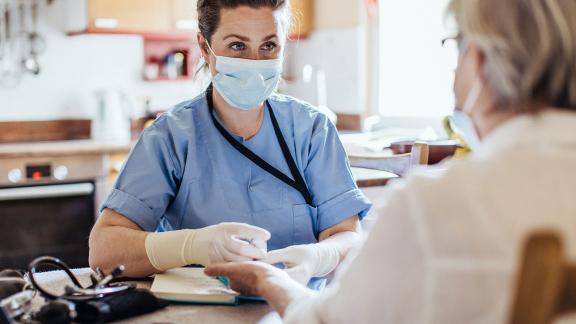Making the most of urgent community response services
Key points
- With demand on urgent and emergency care (UEC) pathways particularly high, urgent community response services have the potential to play a key role with investment to deliver at greater scale.
- UCR services form a crucial part of the long-term vision for community care, as well as being a core part of a wider national focus on delivering more care in the community, linking in with other new and transformational service models like virtual wards.
- Despite the pressures facing the whole health and care system, community providers have made significant progress in delivering UCR services as outlined in the NHS Long Term Plan and are meeting the national target to respond to 80 per cent per cent of UCR referrals within two hours.
- With the right support and investment, there is real opportunity to maximise the potential of UCR services by driving up the volume of calls diverted to them, and therefore increasing UEC capacity across systems.
- This briefing highlights case studies of where the ambition for UCR services is being driven forward by partnership working, cross-sector collaboration and new technological solutions.
- However, government action is needed to deliver a costed and funded workforce plan for health and care. Without increasing the number of staff available, these new ambitions for how we care for people in the community rather than in hospital can only go so far.
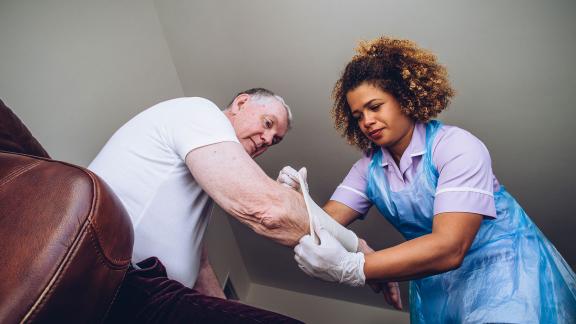
This briefing from the Community Network, hosted by the NHS Confederation and NHS Providers, highlights the central role that community providers and urgent community response (UCR) services will play in in managing system-wide pressures this winter and beyond, and the potential of UCR services to deliver at greater scale for the benefit of patients and systems.
Overview
Community providers will play a central role in managing system-wide pressures this winter and beyond. With demand on UEC pathways particularly high, UCR services – which deliver rapid response care in the community within two hours of receiving a call – have the potential to play a key role with investment to deliver at greater scale.
UCR services are vital because they can prevent unnecessary A&E attendances and hospital admissions by delivering care quickly in people’s homes. In turn, this can contribute to improved patient flow through the whole health and care system, and help to tackle wider capacity challenges such as discharging patients from hospital.
These services also form a core part of a wider national focus on delivering more care in the community, and link in with other new and transformational service models, like virtual wards. They form a crucial part of the long-term vision for community care.
NHS England has recently increased its focus on the role of UCR, including announcing the creation of a new national falls service as part of plans to support winter resilience. Community teams will be sent to help people who have fallen in their home or in care homes, and UCR services will be at the heart of expanding existing local provision.
Given the importance of UCR services, this briefing and accompanying case studies aim to support community providers to maximise the potential of these services, and scale up delivery for the benefit of patients and systems. As we look towards winter, this is a timely moment to share good practice and reflect on how national leaders, systems, and community providers can ensure that these services are delivering maximum value.
Progress so far
Despite the pressures facing the whole health and care system, community providers have made significant progress in delivering UCR services since the ambitions were outlined in the NHS Long Term Plan in 2019. Community providers are now meeting the national target to respond to 80 per cent per cent of UCR referrals within two hours, which is the first national standard of its kind for the sector.
Community providers report that UCR services are where they can have the greatest impact this winter, and there are ways to maximise this, including through increasing referrals to services. According to the latest data, there were 42,835 referrals to UCR services in September 2022. Around a third (35 per cent) of all referrals came from the person themselves, their carer or a relative, while another 17 per cent came general practice.
According to national data, despite local good practice, ambulance service referrals constitute around 7 per cent of the total. There is scope to drive up referrals through 111 and 999 pathways to enable community teams to support more people in their own home or care setting and, where appropriate, prevent an ambulance callout or hospital admission. But at present, many community providers face barriers to doing this, including historical fragmented commissioning arrangements, and the complexity of operating alongside multiple community providers in one integrated care system (ICS).
Given the operational challenges we expect this winter, maximising referrals to UCR services will be key to managing pressures in UEC pathways and to delivering benefits for patients who can be treated safely and effectively at home. In the longer term, UCR services should form a key part in the upcoming NHS England UEC strategy and our long-term approach to managing these pressures.
Learning from existing practice
To maximise the potential of UCR services, and to support winter preparations, it will be important to learn from existing UCR good practice. In many cases, community providers have already been innovating and collaborating to go further than the national target for UCR services.
Case studies of good practice from Hull and London were highlighted as part of the national winter resilience plan, and we have collected five further examples of where the ambition for UCR services is being driven forward by partnership working, cross-sector collaboration and new technological solutions.
The Nottingham and Nottinghamshire integrated care board has worked in partnership with East Midlands Ambulance Service NHS Trust and community providers to enable UCR teams to take calls directly from the stack. They have also worked with voluntary sector colleagues to support volunteer falls responders to deliver more care in the community.
Similarly, Hertfordshire Community NHS Trust and partners at East of England Ambulance Service NHS Trust have been collaborating to deliver several interventions to support admission avoidance at every stage of the UEC pathway.
The East Suffolk and North Essex NHS Foundation Trust has been working collaboratively with several system partners to tackle a disjointed approach to taking pendant alarm calls, and to provide a streamlined and unified system to pass calls on to the most appropriate service.
In the Warrington place-based partnership, the team has worked closely with the local technology provider to implement a system that enables 999 call handlers to divert calls directly into UCR teams.
Finally, Walsall Healthcare NHS Trust has embedded several measures within community health services to prevent unnecessary ambulance trips to A&E and hospital admissions, including by developing a single point of access for UCR services.
In all these case studies, organisations report that this more joined-up way of working has delivered benefits for patients and the system, including reducing the number of ambulance dispatches and conveyances to hospital, and increasing capacity within ambulance teams to see higher acuity calls more quickly.
Conclusion
As these examples show, UCR services hold great potential for community providers, for systems and most importantly, for patients and service users.
The national target for UCR response times is important, but it isn’t the whole picture. With the right support and investment, there is real opportunity to maximise the potential of UCR services by driving up the volume of calls diverted to them, and therefore increasing UEC capacity across systems. While this is especially important for patients, given the pressures facing the health and care system this winter, it is also part of a vital longer-term shift in how we deliver more care in the community.
Systems will also play a key role in unlocking the potential of UCR services. To support this, integrated care boards (ICBs) can bring delivery partners together, ensure sufficient resources are allocated to implement UCR, and drive the standardisation of UCR coverage across the system. On top of this, ICBs can work with partners to embed this model across the ambulance sector, primary care, care homes and other key sectors.
These efforts can be supported at a national level, with NHS England continuing to support with information governance, work with providers to improve the quality of the national dataset, and embed the role of the community sector and UCR services within the upcoming UEC strategy.
However, underlying all of this is the need for sufficient staff to increase capacity of UCR services. This requires government action to deliver a costed and funded workforce plan for health and care. Without increasing the number of staff available, these new ambitions for how we care for people in the community rather than in hospital can only go so far.
